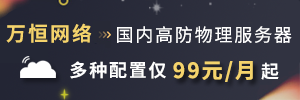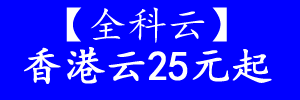简单理解vue中Props属性
GPT4.0+Midjourney绘画+国内大模型 会员永久免费使用!
【 如果你想靠AI翻身,你先需要一个靠谱的工具! 】
本文实例为大家解析了vue中Props的属性,供大家参考,具体内容如下
使用 Props 传递数据
组件实例的作用域是孤立的。这意味着不能并且不应该在子组件的模板内直接引用父组件的数据。可以使用 props 把数据传给子组件。
“prop” 是组件数据的一个字段,期望从父组件传下来。子组件需要显式地用 props 选项 声明 props:
1 2 3 4 5 6 7 | Vue.component('child', { // 声明 props props: ['msg'], // prop 可以用在模板内 // 可以用 `this.msg` 设置 template: '<span>{{ msg }}</span>'}) |
然后向它传入一个普通字符串:
<child msg="hello!"></child>
举例
错误写法:
1 2 3 4 5 6 7 8 9 10 11 12 13 14 15 16 17 18 19 20 21 22 23 24 25 26 27 28 29 30 31 32 33 34 35 36 37 38 39 40 | <!DOCTYPE html><html lang="en"><head> <script type="text/javascript" src="./vue.js"></script> <meta charset="UTF-8"> <title>vue.js</title></head><body><pre> //使用 props 传输资料予子组件 //props , data 重复名称会出现错误</pre><div id="app1"> <child mssage="hello!"></child></div><script> Vue.config.debug = true; Vue.component('child', { // declare the props props: ['msg','nihao','nisha'], // the prop can be used inside templates, and will also // be set as `this.msg` template: '<span>{{ msg }}{{nihao}}{{nisha}}</span>', data: function() { return { mssage: 'boy' } } }); var vm = new Vue({ el: '#app1' })</script></body></html> |
正确写法:
1 2 3 4 5 6 7 8 9 10 11 12 13 14 15 16 17 18 19 20 21 22 23 24 25 26 27 28 29 30 31 32 33 34 35 | <!DOCTYPE html><html lang="en"><head> <script type="text/javascript" src="./vue.js"></script> <meta charset="UTF-8"> <title>vue.js</title></head><body><pre> //使用 props 传输资料予子组件 //props , data 重复名称会出现错误</pre><div id="app1"> <child mssage="hello!"></child></div><script> Vue.config.debug = true; Vue.component('child', { // declare the props props: ['msg','nihao','nisha'], // the prop can be used inside templates, and will also // be set as `this.msg` template: '<span>{{ msg }}{{nihao}}{{nisha}}</span>' }); var vm = new Vue({ el: '#app1' })</script></body></html> |
props 传入多个数据(顺序问题)
第一种:
HTML
1 2 3 4 5 | <div id="app1"><child msg="hello!"></child><child nihao="hello1!"></child><child nisha="hello2!"></child></div> |
JS
1 2 3 4 5 6 7 8 9 10 11 12 13 14 15 16 | Vue.config.debug = true;Vue.component('child', {// declare the propsprops: ['msg','nihao','nisha'],// the prop can be used inside templates, and will also// be set as `this.msg`template: '<span>{{ msg }}{{nihao}}{{nisha}}</span>',/*data: function() {return {msg: 'boy'}}*/});var vm = new Vue({el: '#app1'}) |
结果:hello! hello1! hello2!
第二种:
HTML
1 2 3 4 5 | <div id="app1"><child msg="hello!"></child> <child nihao="hello1!"></child> <child nisha="hello2!"></child></div> |
JS
1 2 3 4 5 6 7 8 9 10 11 12 13 14 15 16 | Vue.config.debug = true;Vue.component('child', {// declare the propsprops: ['msg','nihao','nisha'],// the prop can be used inside templates, and will also// be set as `this.msg`template: '<span>123{{ msg }}{{nihao}}{{nisha}}</span>',/*data: function() {return {msg: 'boy'}}*/});var vm = new Vue({el: '#app1'}) |
结果:123hello! 123hello1! 123hello2!
第三种:
HTML
1 2 3 4 5 | <div id="app1"><child msg="hello!"></child><child nihao="hello1!"></child> <child nisha="hello2!"></child></div> |
JS
1 2 3 4 5 6 7 8 9 10 11 12 13 14 15 16 | Vue.config.debug = true;Vue.component('child', {// declare the propsprops: ['msg','nihao','nisha'],// the prop can be used inside templates, and will also// be set as `this.msg`template: '<span>{{ msg }}{{nihao}}{{nisha}}123</span>',/*data: function() {return {msg: 'boy'}}*/});var vm = new Vue({el: '#app1'}) |
结果:hello! 123 hello1! 123 hello2!123
第四种:
HTML
1 2 3 4 5 | <div id="app1"><child msg="hello!"></child><child nihao="hello1!"></child><child nisha="hello2!"></child></div> |
JS
1 2 3 4 5 6 7 8 9 10 11 12 13 14 15 16 | Vue.config.debug = true;Vue.component('child', {// declare the propsprops: ['msg','nihao','nisha'],// the prop can be used inside templates, and will also// be set as `this.msg`template: '<span>{{ msg }}123{{nihao}}{{nisha}}123</span>',/*data: function() {return {msg: 'boy'}}*/});var vm = new Vue({el: '#app1'}) |
结果:hello! 123 123hello1! 123hello2!
结论:
在props 中传入多个数据是,如果在父组件的模板类添加其他元素或者字符会有:
1-在最前面加入—每个子组件渲染出来都会在其前面加上
2-在最后面加入—每个子组件渲染出来都会在其后面加上
3-在中间加入—他前面子组件后面加上,后面的子组件后面加上
参考: http://cn.vuejs.org/guide/components.html#Props
本文已被整理到了《Vue.js前端组件学习教程》,欢迎大家学习阅读。
关于vue.js组件的教程,请大家点击专题vue.js组件学习教程进行学习。
以上就是本文的全部内容,希望对大家的学习有所帮助,也希望大家多多支持脚本之家。

微信公众号搜索 “ 脚本之家 ” ,选择关注
程序猿的那些事、送书等活动等着你
相关文章

详解如何在vue项目中使用eslint+prettier格式化代码
在开发中我们需要一种能够统一团队代码风格的工具,作为强制性的规范,统一整个项目的代码风格,这篇文章主要介绍了详解如何在vue项目中使用eslint+prettier格式化代码,需要的朋友可以参考下2018-11-11




































最新评论